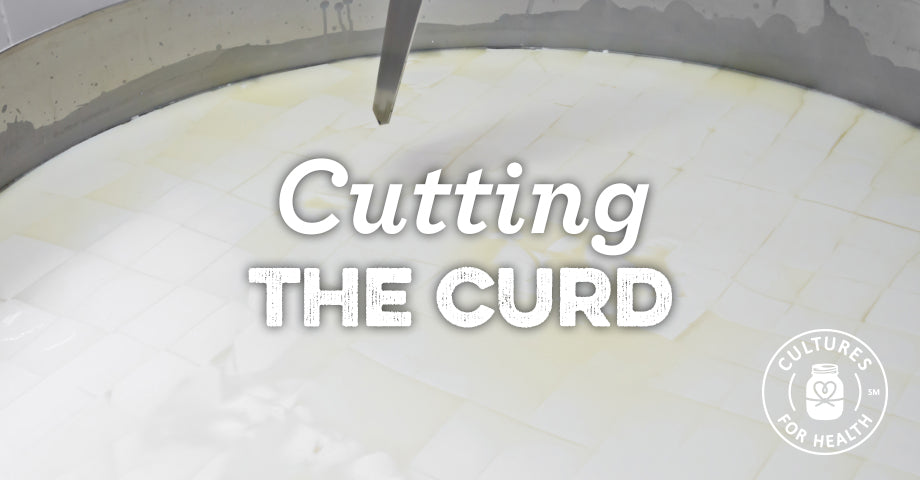
WHAT ARE CHEESE CURDS?
Curds are the white, solid, coagulated milk proteins that separate from the whey in milk after the addition of a coagulant such as rennet or vinegar, or by natural bacterial activity in milk left out at warm temperatures for a time.
WHY CUT THE CURD?
Cutting the curd is an essential step in the cheesemaking process, as it provides more surface area for continued drainage of the whey. Some recipes advise cutting the curds in larger pieces to achieve a moister cheese, while some advise cutting them smaller, to produce a drier cheese. Most recipes will specify the curd size needed for the particular style of cheese being made.
HOW TO CUT THE CURD
Use a Curd Knife
Use a curd knife: a long, blunt-ended knife that will reach to the bottom of the pot without immersing the handle. It should be non-reactive, preferably stainless steel.
We carry a round-tipped curd knife with a 12-inch blade and 5-inch handle.
Check for a Clean Break
Before cutting the curds, check for a clean break, indicating that coagulation is complete. Use clean fingers, a nonreactive spoon, or a plastic spatula. Press lightly on the surface of the curd until it breaks, or make a small slice in the surface. Scoop your finger or tool upwards and examine the whey that rushes in to fill the cut. If it is clear and yellow, you have achieved a clean break. If it is whitish, cloudy, or milky, wait a bit longer and check again.
Making Cuts
- Begin making vertical, uniform cuts from the top of the curd clear to the bottom of the pot and all the way across the surface of the curds.
- Turn the pot 90 degrees and repeat the process, making a checked pattern on the top.
- Following the cuts you have made, turn the knife to a 45-degree angle and cut through the curds again in the same fashion, from one side of the pot to the other.
- Turn the pot 45 degrees and continue making angled cuts, work diagonally to the checked pattern previously made.
- Turn the pot 45 degrees again, and make another set of angled cuts. Do it one last time: turn 45 degrees and cut.
- With a long-handled spoon, gently stir the curds to bring the bottom curds to the top, and cut any large ones down to size.
Recipes for softer cheeses may advise using a ladle or a spoon to cut slices out of the curd and scoop them straight into a colander for draining. Follow your recipe's instructions on cutting curds, and remember that curds must be handled gently, as they are prone to sticking together (matting) and/or excessive loss of butterfat.
















